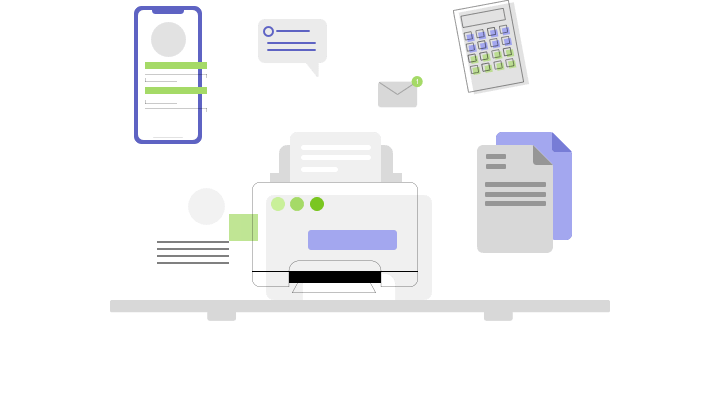
If you interview for an entry-level position in investment banking, equity research, or asset management, you will undoubtedly have to be familiar with the four financial statements. In other words, we are dividing income and expenses into the amounts that were used in the current period and deferring the amounts that are going to be used in future periods. For the sake of balancing the books, you record that money coming out of revenue. Then, when you get paid in March, you move the money from accrued receivables to cash.

Get Your Question Answered by a Financial Professional
- Recall the transactions for Printing Plus discussed in Analyzing and Recording Transactions.
- Several internet sites can provide additional information for you on adjusting entries.
- Sometimes, they are also used to correct accounting mistakes or adjust the estimates that were previously made.
- He has been a manager and an auditor with Deloitte, a big 4 accountancy firm, and holds a degree from Loughborough University.
- As one fiscal month closes and the next begins, companies must make adjusting journal entries to ensure a clean cutoff for the period.
As a result, Delta will have to make an adjusted entry that debits unearned service revenue and credits service revenue for $100 each. Additionally, GAAP uses accrual-basis accounting because only small companies use cash-basis accounting because they have few receivables and payables. Now that you’re familiar with financial statements, we can discuss revenue and expense recognition principles. Below are sections on revenue and expense recognition principles, deferrals, and accruals, as well as examples.
Accrual Accounting vs. Cash Accounting
Some companies engage in something called earnings management, where they follow the rules of accounting mostly but they stretch the truth a little to make it look like they are more profitable. Others leave assets on the books instead of expensing them when they should to decrease total expenses and increase profit. An adjusting journal entry is an entry in a company’s general ledger that occurs at the end of an accounting period to record any unrecognized income or expenses for the period. When a transaction is started in one accounting period and ended in a later period, an adjusting journal entry is required to properly account for the transaction.
B2B Payments
It’s important to note that many service companies do not have inventory (to sell) because they typically lack goods or a manufacturing process. First, supplies are items that a company uses to run daily operations. — Paul’s employee works half a pay period, so Paul accrues $500 of wages. Adjusting entries will play different roles in your life depending on which type of bookkeeping system you have in place.
When the company collects this money from its clients, it will debit cash and credit unearned fees. Even though not all of the $48,000 was probably collected on the same day, we record it as if it was for simplicity’s sake. Supplies increases (debit) for $400, and Cash decreases (credit) for $400. When the company recognizes the supplies usage, the following adjusting entry occurs. Let’s say a company paid for supplies with cash in the amount of $400. At the end of the month, the company took an inventory of supplies used and determined the value of those supplies used during the period to be $150.
The company needs to correct this balance in the Unearned Revenue account. Unpaid expenses are those expenses that are incurred during a period but adjusting entries examples no cash payment is made for them during that period. Such expenses are recorded by making an adjusting entry at the end of the accounting period.
- Looking at the week (7 days) from June 27 to July 3, we can see that 4 days (June 27 to June 30) relate to this accounting period, and 3 days (July 1 to July 3) relate to the next accounting period.
- For example, an entry to record a purchase of equipment on the last day of an accounting period is not an adjusting entry.
- The purpose of adjusting entries is to convert cash transactions into the accrual accounting method.
- The main objective of maintaining the accounts of a business is to ascertain the net results after a certain period, usually at the end of a trading period.
- In such a case, the adjusting journal entries are used to reconcile these differences in the timing of payments as well as expenses.
For example, the business might pay its rent quarterly in advance, when paid the amount will have been debited to a prepaid rent account in the balance sheet. At the end of each of the next three months adjusting journal entries are made to record the amount of rent utilised during the month. It looks like you just follow the rules and all of the numbers come out 100 percent correct on all financial statements. Just the fact that you have to make estimates in some cases, such as depreciation estimating residual value and useful life, tells you that numbers will not be 100 percent correct unless the accountant has ESP.

The same process applies to recording accounts payable and business expenses. More specifically, deferred revenue is revenue that a customer pays the business, for services that haven’t been received yet, such as yearly memberships and subscriptions. A crucial step of the accounting cycle is making adjusting entries at the end of each accounting period. Taxes are only paid at certain times during the year, not necessarily every month. Taxes the company owes during a period that are unpaid require adjustment at the end of a period.
Why You Can Trust Finance Strategists
Now that we have defined both types of deferrals let’s discuss the journalized entries for prepaid expenses and deferred revenue. In December, you record it as prepaid rent expense, debited from an expense account. Then, come January, you want to record your rent expense for the month. You’ll move January’s portion of the prepaid rent from https://www.bookstime.com/ an asset to an expense. HighRadius Autonomous Accounting Application consists of End-to-end Financial Close Automation, AI-powered Anomaly Detection and Account Reconciliation, and Connected Workspaces. Delivered as SaaS, our solutions seamlessly integrate bi-directionally with multiple systems including ERPs, HR, CRM, Payroll, and banks.